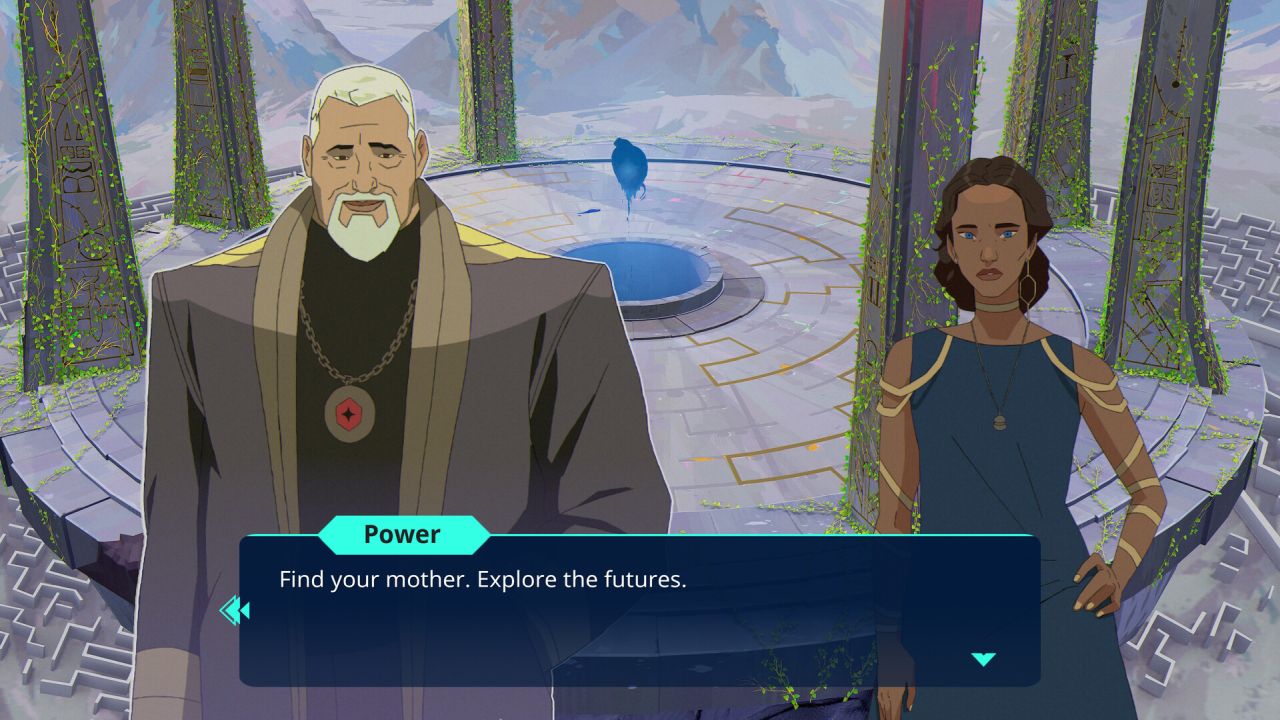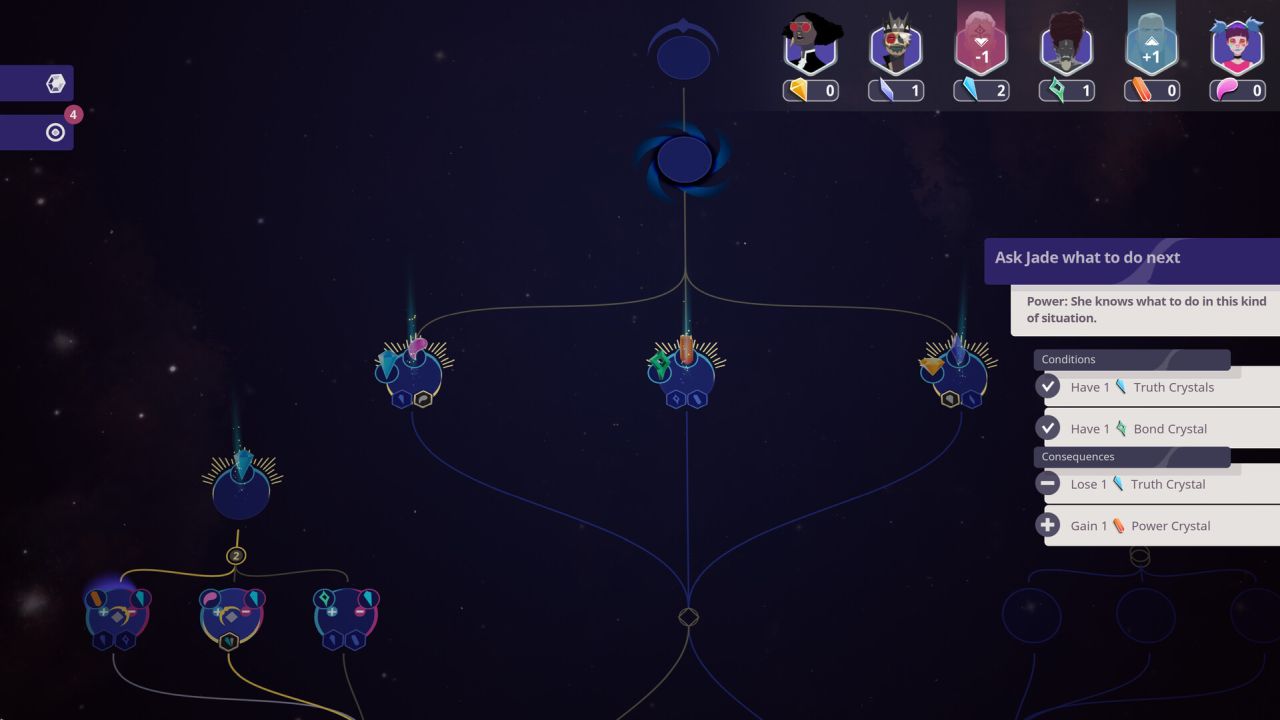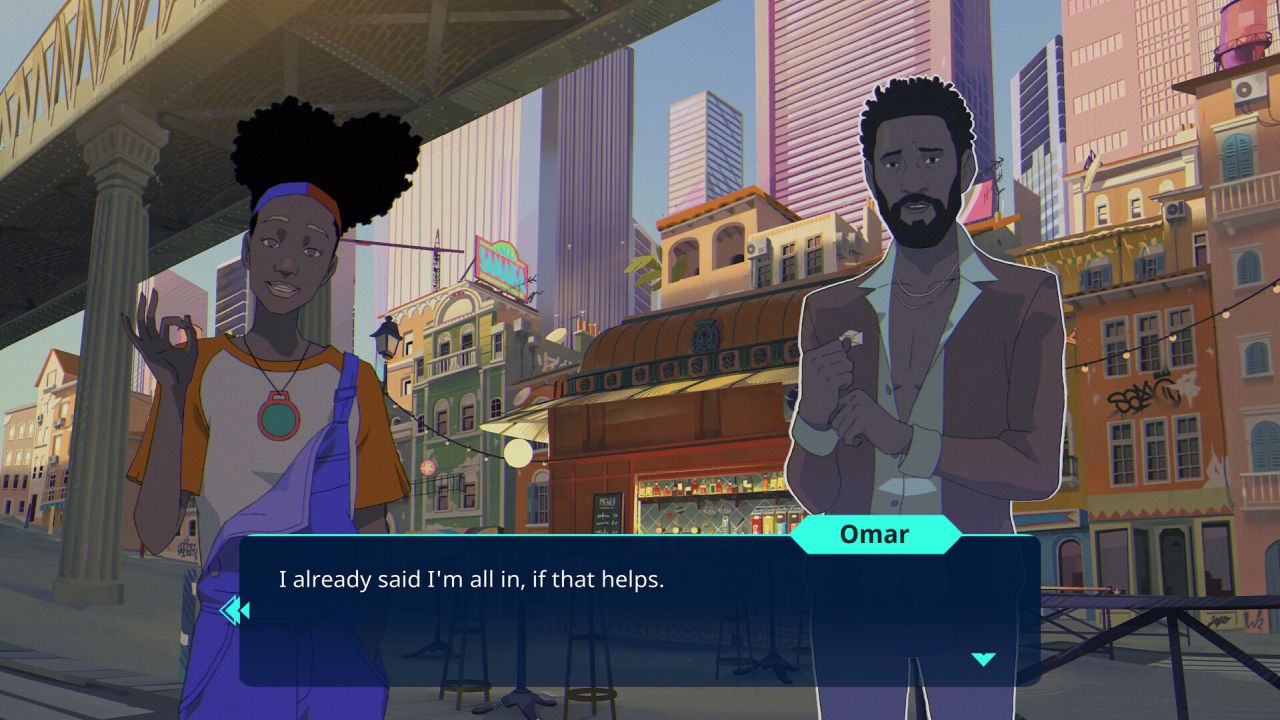Harmony: The Fall of Reverie Review
The duality of a visual novel and player choice
Narrative-focused adventure games and visual novels have always been somewhat niche. They may tell grand stories and feature great art, but their lack of interactivity and big-budget visuals meant it was a struggle to reach larger audiences. Over the past decade, with games like The Walking Dead, Danganronpa, and Zero Escape, the genre got a bit of life injected into it. Don't Nod Entertainment were able to find great success in this resurgence with Life Is Strange in 2015. Their latest title Harmony: The Fall of Reverie is their most expansive yet as far as storytelling goes, but it's also their least-interactive one, swaying fully into visual novel territory. The lack of meaningful gameplay mechanics is just one of the issues facing their latest title, however.

Players assume the role of a woman named Polly, who arrives in a futuristic Sci-fi city in search of her recently missing mother. Polly doesn't find her mother but instead discovers a necklace that unceremoniously pulls her into another world. In this magical world called Reverie, Polly is named Harmony, and greeted by various Aspirations. These god-like characters are named Bliss, Power, Truth, and so on, and as you meet them over the course of the adventure, you get to know their backgrounds and – pun intended – aspirations. These deities have strong connections to and can influence the human world, so Harmony agrees to help. The trouble in Reverie is that its Heart is growing weaker, and only Harmony can help this universe survive. Apparently, her mother has also been in this world, so there are some mysteries to unravel and decisions to make that will affect both worlds.
Just as quickly as Harmony entered the magical world, she was pulled back into the real one, with seemingly no control. This constant flipping back and forth between the two worlds, that players don't have control over, is actually quite exemplary of the narrative issues that exist in the adventure. The opening chapters feel rushed and dump a lot of exposition without showing you much; the constant world hopping really hurts the pacing and a sense of place. Transitions between scenes can be jarring and abrupt, and some chapters fail to settle on a narrative theme or an emotional beat. And while the game features a lengthy narrative, it's definitely overlong – the final hour of this 4-5 hour journey feels like an artificially attached extension, and the story suffers from having a series of points that could be considered an ending – and yet it drags on. The themes also make some jarring shifts in the finale, and may be fairly divisive for players. And even the narrative itself can be a bit dull for certain chapters, as while Aspirations make appearances in both worlds, the human characters are just not very interesting and that's who you spend a lot of time with. The premise is unique, but the narrative delivery is just often overlong and lacking nuance or engagement.
How the story unravels along the way will be decided by the choices you make. That in itself is becoming a well-worn concept in modern adventure games, so what makes The Fall of Reverie stand out is that the developers go all-in on gamifying the system. You may have noticed a recent trend where games are no longer afraid of the negative effects (losing the element of surprise, immersion) of simply putting their choice-and-consequence narrative trees right out to the players. From Detroit Become Human to The Pale Beyond, players nowadays can look at the timeline and see where their actions could have made a difference, and what choices really matter. In The Fall of Reverie, manipulating the choice timeline is the core gameplay mechanic. The way it's framed is that Harmony gets access to a magic device called Augural that lets her see the future. What it translates to is players having a menu with a path that has various forks in the road. So you know when you are entering a scene that has a choice to make, and you also know where the choice will lead next. At the end of the these choice paths you can see the nodes that illustrate the overall outcome – by showing you which Deity you will be aligned with if you head down this way, without actually telling you any narrative details. You will also need a certain amount of Deity-specific magic currency to unlock that particular choice.The system works, but as you can probably tell, things quickly fall apart.

The problem with this design is that it becomes completely gimmick driven. Your path to success is to earn enough currency to unlock the nodes at the end of the chapter – and as the game outright warns you, decisions cannot be balanced. In order to get the Truth-aligned final node, for example, you pretty much have to align with the Truth choices anytime they come up in the story. This means player narrative agency is left at the door, as you are no longer making choices you want for the story, but rather for the arbitrary Deity currency so you can unlock the finale nodes in each chapter. This isn't the first game to run into this kind of dilemma, but it's probably the first to make it into such an arbitrary game mechanic. This sort of design could maybe only be enjoyed by players who are comfortable just following a single path that they choose very early on, with little deviation, and then to see the rest of the game you replay with a different main direction.
When not making decisions on the narrative path board, you will be passively clicking through dialogue within text boxes. The game is very much a visual novel, as mentioned, but at least there are good quality-of-life features included. You can pause and rewind dialogue at will, and set it to auto-scroll without having to click. Chapters can be replayed from the beginning to make different choices, as long as you are not in the final node of the chapter. Since the choices are made in the Augural menu, you don't even get to make them in the text boxes like a traditional RPG.
The Fall of Reverie does put up some nice looking background visuals, which is good considering you don't have much else to look at. There is a wide variety of static and some semi-dynamic backgrounds where the conversations take place, as well as the characters appearing in the foreground and being partially animated. The camera often pans and zooms around a scene before getting into the dialogue, which again helps liven up the world a little beyond the typical flat VN presentation. The game also features some very well animated cutscenes, which are a visual treat, however they often strangely depict mundane events, such as riding the train or walking through a door, and not the more intense story moments. The music is good as well, if limited to ambiance. All of the characters are voiced with above average quality, though strangely missing for most of Harmony's internal monologues. As you may expect, the game is not at all demanding on the Xbox Series X hardware and runs without issues.

Harmony: The Fall of Reverie may be the most narratively-expansive game that the developers have made to date, but this effort is somewhat wasted on a story that's often dragged down by uneven pacing and jarring scene transitions. There is plenty of telling, and not enough showing – despite the high potential for the latter with some nice looking backgrounds and anime-style cutscenes. The core player choice mechanic is turned into a gameplay gimmick that sort of forces you to throw the story-guided choices out, in favor of racking up enough imaginary currency points to get the nodes at the end of the path. It's inherently conflicting, and not for fans of immersive adventure games that don't put their nuts-and-bolts of the choice systems into the spotlight. Some players may appreciate the art and the unique take on choice-based gameplay, but it certainly won't be for everyone.
 Comments
Comments


















